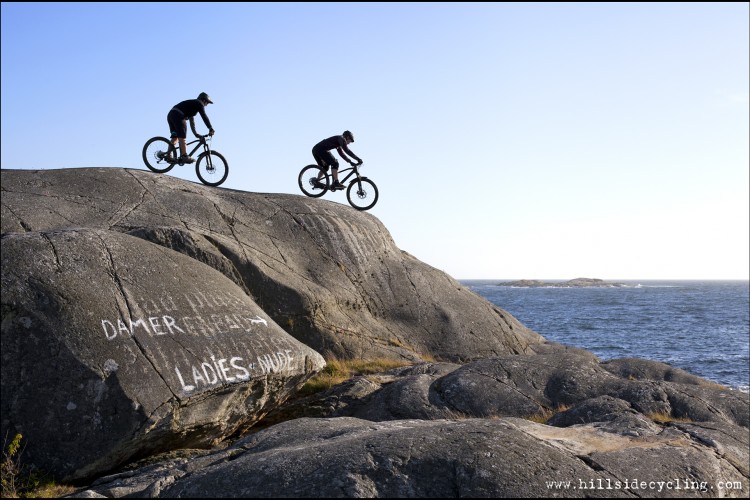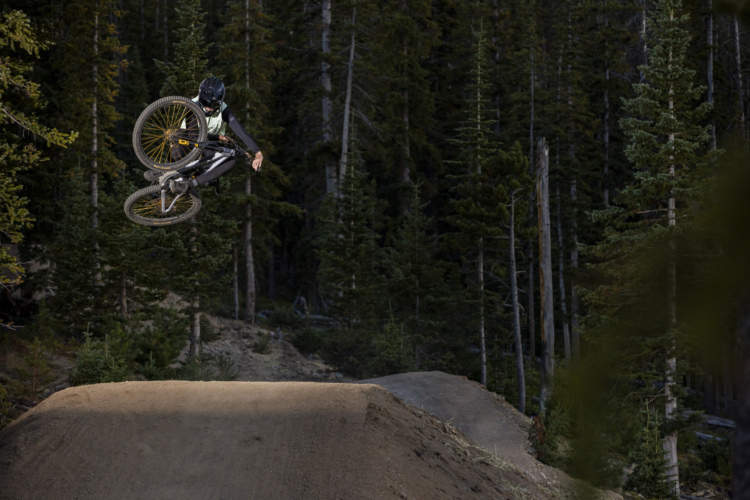By the time you read this, the new 2012 Avid X0 Trail brakes should be hitting your local bike shop. I’ve had the chance to test these shiny new brakes for a few months now, and even managed to vaporize a set of pads in the process. For those who are unfamiliar with the Avid line of brakes, the new XO trail brakes are Avid’s response to a need in the high-end aggressive multipurpose MTB brake market (XC, Trail, AM/Enduro, and DH).
Avid introduced the new XO Trail brakes at Sea Otter, and I have been after them ever since. I was pretty stoked to have them arrive well in advanced of my Mountain Creek trip. The Trail brakes share nothing in common with the regular XO’s that have been around for a while. If I had to compare these brakes to something in the Avid line up, I would use the Code calipers, cross them with the XO’s weight savings, and then splash the new Elixir 9’s in there for lever and control. Add a few bells and whistles, and you have the new XO Trail brakes.
Specs
The most obvious feature is the new 4-piston lightweight caliper. This is a two-piece unit forged out of aluminum with asymmetrical pistons. The first set of pistons (the smaller ones) strike the rotor just a bit faster than the larger ones, creating a natural toe-in effect on the pads to help prevent squeal.
An adjustable banjo makes it very easy to run the brake line and helps keep the line closer to your bike, which reduces the chance of snagging. Coming in at 340 grams (depending on the hardware configuration), these are only 7 grams heavier (on average)than the regular XO, for a total of 14 grams difference. Seriously, the difference in weight for a whole bike is less than that of five pennies.
The carbon lever is new for the XO trail, using a pivot bearing this time ’round for smoother action and longer life. Speaking of the lever, you get the famous tool-free contact point adjustment and tool-free reach adjustment as well. Inside the lever, the internals have Taper bore technology (see video below), with an improved bladder and air separator seals (some older Elixir versions had issues with bleeding).
Another important feature is the new HS1 rotors, available in various rotor sizes: 140 (rear only), 160, 170, 180, and 200mm. On my DH bike, I have installed the 200mm rotor up front and the 180 out back. Other important features include the flip-flop design, allowing the brakes to be mounted either side, and the Match Maker control-mounting option, which is perfect for those with limited space on the bars or those who just don’t want to mar their carbon bars.
Installation
Installing the XO trail brakes takes about 30 minutes to an hour, depending on your skill. A T25 torx tool and a 4.5mm hex tool are required to install the levers and calipers on your bike. You will also need a torque wrench, side cutter, zip ties, bleed kit, and a quality hose cutter (to get that perfect length).
Install the caliper adapter first–in my case, I needed the 40mm IS bracket, torquing it down to 9Nm (same for the front of the bike with 40mm post adapter). Then install the caliper (loosely at first). Once the wheel is in place you can squeeze the lever to bring in the pads and torque down the hardware, again at 9Nm. In the case of my V10C, I just adjusted the banjo to turn toward the rear triangle, and had the hose follow the path up to the bars. One quick tip: before you go and tie the hose down, run the entire length first and keep the zip ties loose. This allows you to adjust the exact position of the hose, allowing for bends.
Before you tie the hoses down, put some 3M anti-rub tape down. Then, tighten the zip ties and trim them with a sharp blade to prevent any sharp edges from gouging you. Last, install the levers and use Avid’s guide to best position them. In my case, I have the levers run at a slight angle down from parallel to my arms when I’m in a seated position. I placed the levers toward the center of the bar just enough that I only have room for one or two fingers to reach the lever. Torque the MMX hardware down to 4Nm using a T25 torx bit and you’re ready to ride!
Testing
The very first thing that anyone should do after installation is follow the manufacturer’s instructions on bedding in the brakes: 20 to 30 mid to heavy applications, without locking up the wheel.
I figured that installing the XO Trail brakes on my V10C would probably push these units to the limit of their abilities. Then again, the SRAM website says these are rated for DH. Having run the regular XO’s without any issue on my V10C, I was expecting no less in performance. I love the feel of new brakes on a bike, especially when the levers are buttery smooth in their travel.
Having the MMX adapters for my rear shifter is an excellent feature, allowing me to easily adjust lever reach and position relative to my brake. All the hardware is now T25, which has less chance of the tools slipping when adjusting. Speaking of adjustments, the tool-free lever reach and contact adjustments work great with no binding at all, making for an easy adjustment, even on the go.
The XO Trail brakes provide fade-free torque, even when it gets really steep on some of those gnarly sections at Mountain Creek Bike Park where speed control is a must. Modulation is superb on the XO Trail brakes, and one finger is all you need to stop. There is definitely an exponentially rapid decrease in speed that correlates with increased pressure on the lever. I also noticed a nice, crisp release with no hint of dragging. Even after extended runs, I noticed that the brakes released very well. The DOT 5.1 fluid that is specified for the XO Trail brakes does a good job of preventing gassing and fade. The purple and blue coloration on my rear rotor can attest to the heat these can build up!
Over the course of a set of pads, I did have a small issue with squealing, and the organic compound did glaze a bit, which was the only negative thing I could say relative to the sintered pads that I was running on the regular XO’s. Pad life was a bit shorter than I expected: I killed a set in about half a season on my V10C. A set on my regular XO’s lasted a whole season. On the bright side of things, I can say that the braking quality did not deteriorate at all, despite wearing the pads down to nearly nothing. That’s a definite plus.
Bottom Line

The chart above shows how the XO Trail brakes performed. Other than a bit more noise than I would like, the XO Trails work well and feel excellent! If and when they release brake pads with a sintered compound, pad life would be extended dramatically, especially for downhillers.
MSRP: $310 per brake.
A big thanks to the folks at Avid for sending down the XO Trail brakes for review.































4 Comments
Oct 18, 2012
I definitely agree with your sentiments on brake pads. I burned through a set of organic pads on the rear of my bike on regular X0 brakes in just about two months this summer! Admittedly, I was riding A LOT and did some major shuttle runs, but only two months? C'mon!
Other than that, I really enjoyed the regular xo. Would love to get a chance to try the trails.
Oct 22, 2012
Oct 18, 2012
I recently got a set of cheapie Shimanos (sub-slx level hydros) for free and they're so much better than either set of elixers! Plenty of power and modulation, no noise, no vibration. Wonderfullness.
Oct 18, 2012
Oct 19, 2012